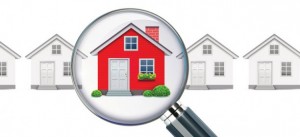
Are you concerned about a crack in your foundation?
Florida homeowners can encounter minor structural damage and foundation problems in their home or business due to a number of factors including poor soil conditions. It is quite common for buildings in Florida to shift and sink and can cause cracks in the foundation. Fortunately, most of these cracks are related to the curing process or to common settling. Sometimes they can be a sign of a more serious problem. Are you seeing these warning signs in your home? If you are, it could be that your home’s foundation is in need of repair.
- Visible exterior cracks
- Cracks or uneven sidewalks or driveway
- Drainage not flowing away from the home
- Unlevel fascia boards
- Yard slopes toward the home
- Large trees with roots close to the foundation
- Cracks in the interior walls
- Floors are visibly not level
- Window is not square
- Wall corners not square
- Gaps on the top of interior doors when closed
- Doors jam and/or won’t latch
Foundations are not uniform, and conform to the structural standard of the year in which they were built. In accordance with our standards of practice, we identify foundation types and look for any evidence of structural deficiencies. However, cracks or deteriorated surfaces in foundations are quite common. In fact, it would be rare to find a raised foundation wall that was not cracked or deteriorated in some way, or a slab foundation that did not include some cracks concealed beneath the carpeting and padding.
While we are not specialists, we will certainly alert you to any suspicious cracks if they are clearly visible during our inspection. Buy Your Side Home Inspections has been inspecting homes and businesses in Central Florida, and specifically Osceola County, for many years. Our certified professionals are constantly being educated in the changes in our industry and bringing that expertise and knowledge to you, your family and your business. Call Buy Your Side for your next inspection. 407.780.0911.
Read More

Appraisal vs. Inspection
Appraisal vs. Home Inspection. Although they appear to be the same – they serve specific purposes. The appraiser is concerned with the VALUE of the property based on a set of criteria such as the local real estate market, home’s age and features. The home inspector is more concerned with the CONDITION and FUNCTION of critical systems of the property based on standards and codes and can make recommendations for repairs.
Here are a few things the Appraiser does:
- Measures the exterior of the home taking photos of the outside including any improvements that add value such as landscaping, driveways, pools, workshops, etc.
- Notes property topography, drainage, boundaries, adjacent land uses, and potential hazardous conditions
- Lists the material and quality of construction for the home and any detaching buildings.
- Notes any damage observed such as settlement, rotting wood, broken windows, curled roof shingles, and possible termite damage
- Takes pictures of the interior of the home noting room placement, quality of construction and improvements and updating such as appliances, home entertainment, security systems, etc.
Here are some of the main components inspected by the Home Inspector:
- Walls, floors, columns, ceilings, roof structure
- Exterior walls, doors, windows, garage door operators, decks, balconies, steps, railings
- Vegetation, grading, driveways, walkways
- Eaves, soffits, and fascias
- Roof coverings, flashing, skylights, chimneys, and roof penetrations
- Drainage systems – gutters and downspout
- Interior plumbing drain, waste and venting systems
- Interior water supplies, distribution system, and fixtures
- Hot water systems
- Plumbing shut off valves
- Electrical main entrance and distribution panels
- Connected devices and fixtures
- GFCI and AFCI receptacles
- Smoke detectors
- Location of panel boxes
- Heating & Cooling equipment, operating and safety controls
- Chimney, flue, and vents
- Fireplaces
- Condensation lines
- Ceilings, Walls, Floors, Steps, Railings
- Counters and cabinets
- Doors and windows
- Insulation
- Ventilation of attics
- Venting systems and fans
- Dishwashers, ovens, ranges, disposals, and microwaves
Having a full Home Inspection done by Buy Your Side Home Inspections will take all the guesswork out of buying or selling a home. It removes the potential “surprise” factor, and with the economy as it is these days, that’s a wise action to take!
Call Tommy Joynes of Buy Your Side Home Inspections at 407.780.0911 today!
Read More

Keys to Your New Home
Congratulations – you’re a homeowner. You have the keys to your new home. Now, what should you do to protect your investment? Here are a few recommendations for routine maintenance to help maintain your property. This list is not intended to be comprehensive but provides a good foundation. For more home maintenance tips and energy saving advice contact your Buy Your Side Home Inspections 407.780.0911.
As soon as you move in:
- Change all locks on exterior entrances to your home.
- Locate the main shut-offs to plumbing, electrical and heating systems.
- Replace batteries in all smoke detectors and install fire extinguishers near stoves, in garages, and near fireplaces / wood stoves.
- Address any items on the Home Inspection Report that require immediate attention.
On a monthly schedule:
- Test all GFCI (ground fault circuit interrupter) devices.
- Check your fire extinguishers to be sure they are fully charged.
- Tighten loose toilets and repair/replace faulty flush mechanisms.
- Ensure water is not leaking during showering.
- Check all plumbing fixtures for leakage and repair or replace as needed.
- Check grout and caulk in bathrooms.
- Replace or clean heating and cooling air filters.
- Secure gutters and downspouts and remove any debris.
Twice a year in the Spring and Fall:
- Check your roof coverings, chimney and flashings for damage.
- Check for evidence of leakage, condensations or critters.
- Trim tree branches and shrubs away from your home.
- Inspect the exterior walls and foundation of the house for damage, cracking or movement. Look for bird nests, insect and critter activity.
- Clean and test windows to be sure they are operating correctly.
- Add caulking and weather-stripping if needed. Inspect for evidence of rotten wood.
- Check all walkways for movement and repair any trip hazards that may develop.
- Clean and repair window and frames as needed.
- Test the garage door opener to ensure the auto-reverse function is working properly.
- Clean and lubricate rollers, tracks, and hinges on the overhead doors.
- Clean or replace exhaust fan filters.
- Clean and inspect all appliances as suggested by the manufacturer.
Once a Year:
- Replace smoke detector batteries
- Have the heating, cooling and water heater systems cleaned and serviced.
- Have chimney inspected and cleaned.
- Be sure the rain caps and vermin screens are secure.
- If you have well water, have your well tested and have your pump and service tank inspected for leaks or evidence of wear.
- Have your home inspected for wood-destroying insects (termites, carpenter ants, etc.)
Read More

Fast Track the Sale of Your Home
You’re ready to sell your house and you want the best possible purchase price for your home. During the sales process, a Home Inspection is performed and, in most instances, paid for by the buyer and conducted right before closing the sale. You can potentially shorten the process and fast track the sale of your home by removing obstacles before they can interfere with the final sale. In today’s buyer’s market getting a Pre-Listing Inspection, sometimes referred to as a Seller Inspection, can be very beneficial. Here are just a few benefits to a Pre-Listing Home Inspection.
- Once your home is listed, it could sell faster because there are virtually little to no surprises and stalls by potential buyers. Your sales agent will have fewer issues to address and negotiate on your behalf in the final stages of an offer. Some buyers even wave the home inspection altogether.
- Your home could sell for more money. After the Pre-Listing Home Inspection, you can discuss with your selling agent what areas need to be addressed ahead of listing your home to improve your home’s appeal. A Pre-Listing home inspection can help your agent set realistic price expectations and can be used to substantiate a higher asking price by disclosing to potential buyers that problems don’t exist or have been corrected.
- You decide what repairs you are able to make, shop for competitive contractors and have time to make the repairs prior to listing your home. Any issues you are unable to address ahead of time can be reflected in the purchase price.
- You choose the Home Inspector based on reputation, credentials and fees rather than being at the mercy of a buyer’s choice of inspector.
- You can schedule the home inspection when it’s convenience and can be present during the inspection to provide any explanations of current conditions, details of equipment maintenance and improvements. (Normally not done in a Buyer’s Inspection.)
If you are planning on buying or selling a home in the near future in Central Florida and Osceola County, we believe strongly that having a full home inspection is a must! During the negotiation process there is no greater strength in the process than being able to prove the true condition of the Central Florida home. Call Tommy Joynes and Buy Your Side Home Inspections 407.780.0911. thefloridainspector.com
Read More





Follow Us!